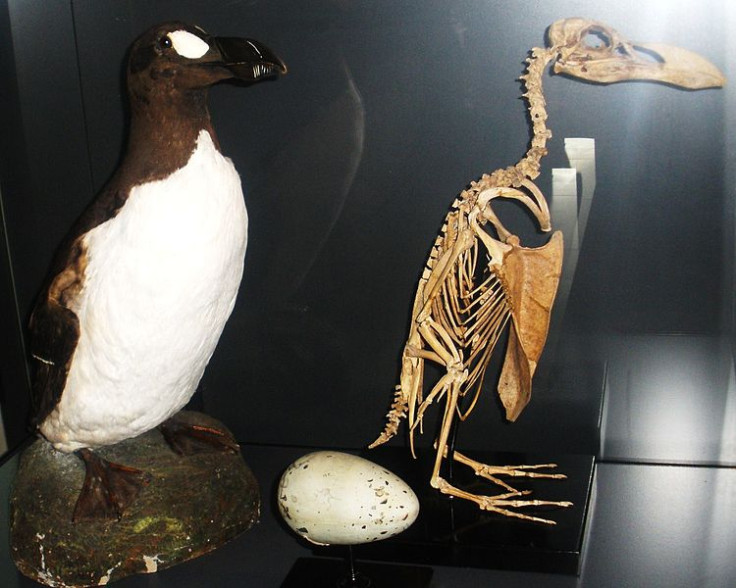Scotland's Dodo: Extinct 1,500-Year-Old Great Auk Skeleton Found

The partial skeleton of a penguin-like, extinct bird dubbed "Scotland's dodo" has been unearthed in an archaeological dig in East Lothian.
A bone from a Great auk, or Pinguinus impennis, was discovered in a dig at the Scottish Seabird Centre in North Berwick. The flightless bird became extinct in the mid-19th century and has not been seen in Scotland since 1840.
The segment of the upper arm bone was found at the entrance to a building, among the remains of butchered seals, fish and seabirds. It has been carbon-dated to between the 5th and 7th centuries, when the species was hunted for taxidermy specimens, a source of oil, food and its eggs.
"The discovery of the Great auk bone on site at the Scottish Seabird Centre is fascinating but also very sad," Tom Brock, chief executive of the centre, told BBC News.
"We are so fortunate in Scotland to have a rich variety of seabirds and we must use the extinction of the Great Auk as a warning to future generations to look after our wonderful wildlife and the marine environment as an absolute priority.
"There are both behavioural and environmental lessons that must be taken from this internationally-important finding, and as an educational and conservation charity we will remain dedicated to inspiring people to enjoy, protect and learn about wildlife and the natural environment."
Great auks bred on rocky, isolated islands in the Atlantic Ocean region, where there was easy access to food. The birds could be found as far south as northern Spain and were present around the coasts of Canada, Greeland and Iceland, as well as the Norwegian and British coastlines.
"In the last two decades there has been a renaissance in our understanding of the archaeology and history of early Medieval Scotland," Rod McCullagh, of Historic Scotland, told Culture24.org.
He added: "The discovery of the remains of domestic buildings and the associated detritus of daily life at North Berwick gives us a glimpse of what ordinary life was like in East Lothian at this time."
"That daily life involved the killing of such valuable birds as the great auk is no surprise but the discovery of this bone perhaps attests to a time when hunting did not overwhelm such a vulnerable species."
Tom Addyman, of Edinburgh-based team Addyman Archaeology, believes the discovery may help researchers further understand the history of wildlife.
"The discovery of the great auk bone is an illuminating find as we seek to understand and document the importance of the area in the history of wildlife and human habitation in the Middle Ages," he said. "We hope that its discovery helps historians and conservation experts, such as the Scottish Seabird Centre, to educate future generations about the precious nature of our natural resources."
© Copyright IBTimes 2025. All rights reserved.






















